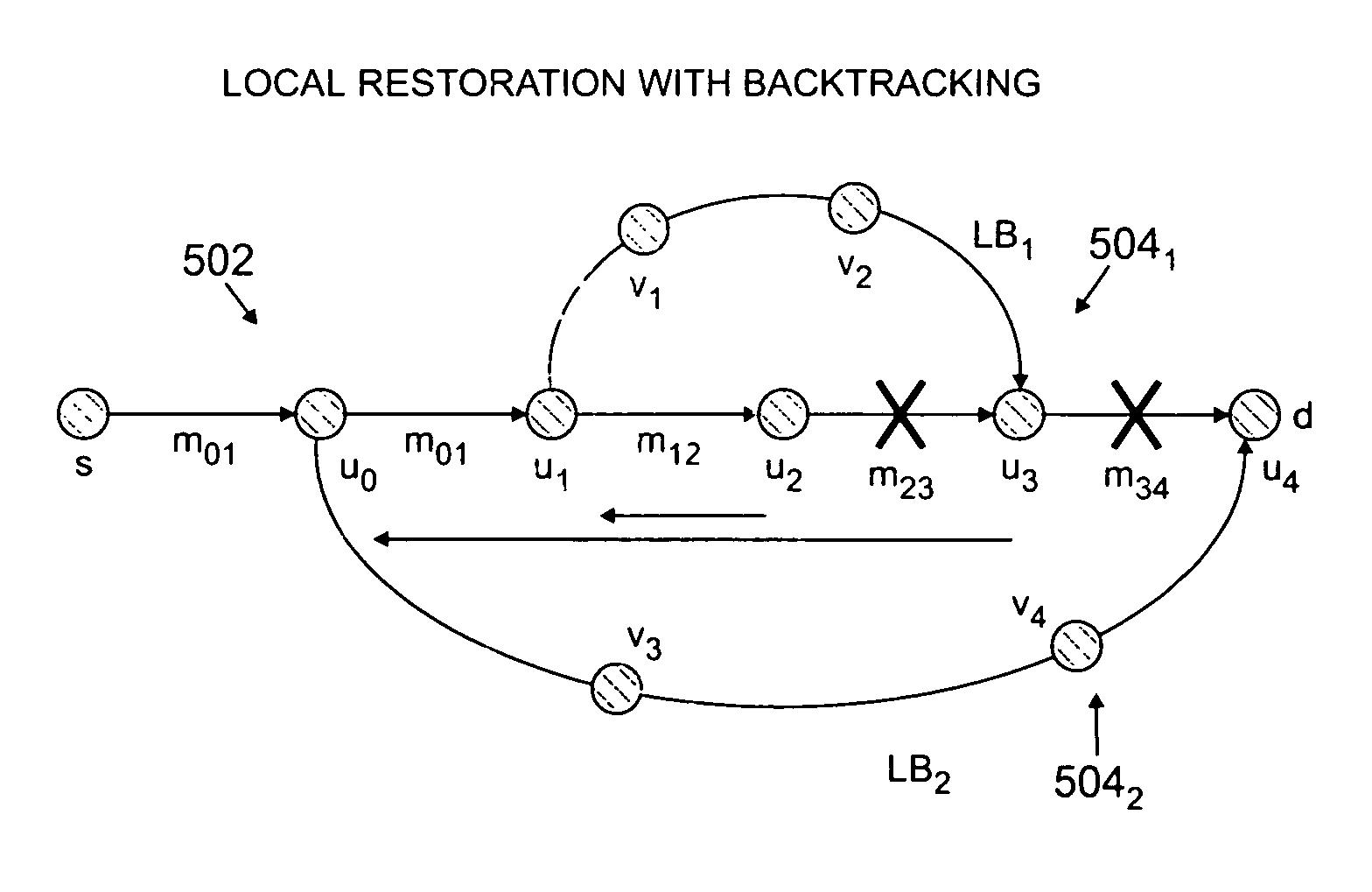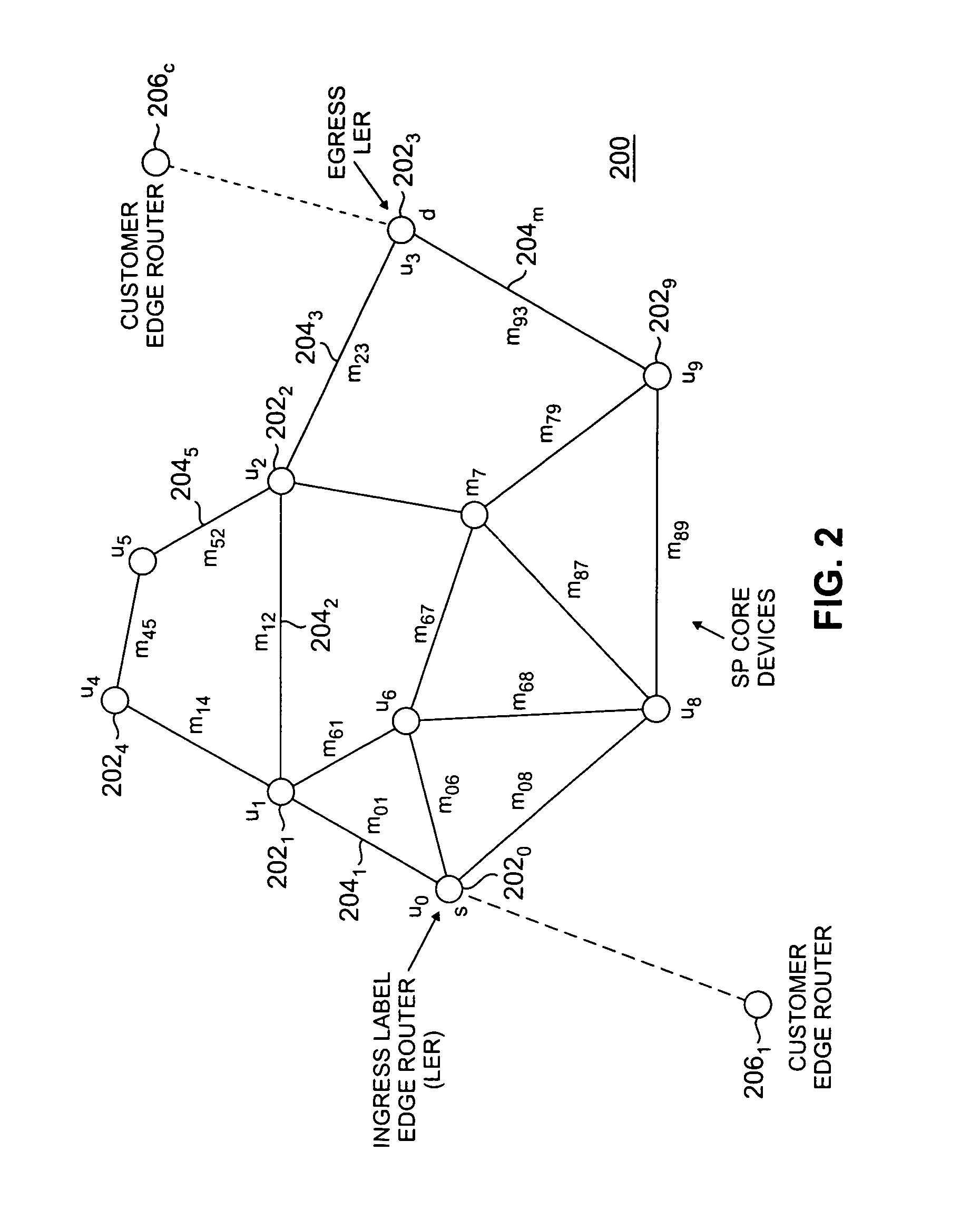Routing bandwidth guaranteed paths with local restoration in label switched networks
a technology of label switching and routing paths, applied in the field of label switching networks, can solve the problems of large restoration latencies of the order of seconds or at best 100 s of milliseconds, variable second and third components of end-to-end restoration, and delay equal to the amount of time elapsed before corrective action, so as to minimize bandwidth usage and free excess bandwidth
- Summary
- Abstract
- Description
- Claims
- Application Information
AI Technical Summary
Benefits of technology
Problems solved by technology
Method used
Image
Examples
first embodiment
[0073]Referring to FIG. 1, at step 110, a determination is made regarding the backtracking distance to be used to compute the restoration paths. The present invention includes three backtracking distance embodiments. A first embodiment includes no backtracking (D=0). In this case, the backup path must originate at the node at which the failed link originates, which represents true local restoration and provides best restoration latency. The link restoration paths computed for D=0 can use a subset of primary path links downstream towards the destination node.
second embodiment
[0074]A second embodiment includes bounded backtracking (D=k), where k equals some integer greater than zero (0). In this embodiment, the backup path can originate at a node on the primary path up to “k” hops away from the node that owns the link.
third embodiment
[0075]A third embodiment includes infinite backtracking (D=∞). In this instance, unlimited backtracking is permissible, and therefore in the worst case, the backtracking may result in backup paths that originate at the source node. The end-to-end restoration may be considered a special case of this where the maximum backtracking allowed is equal to length of the primary path, however the restoration always has to be initiated at the source node.
[0076]The first backtracking embodiment (i.e., D=0) may require the highest amount backup bandwidth and lowest restoration latency, whereas the third backtracking embodiment (i.e., D=∞) requires the least amount of bandwidth and highest restoration latency. The second backtracking embodiment (i.e., D=k, where k is an integer greater than 0) provides a tradeoff of bandwidth utilization for better restoration latency.
[0077]It is noted that the sharing of links on backup paths exploits the fault model and the restoration mechanisms as described ...
PUM
 Login to View More
Login to View More Abstract
Description
Claims
Application Information
 Login to View More
Login to View More - R&D
- Intellectual Property
- Life Sciences
- Materials
- Tech Scout
- Unparalleled Data Quality
- Higher Quality Content
- 60% Fewer Hallucinations
Browse by: Latest US Patents, China's latest patents, Technical Efficacy Thesaurus, Application Domain, Technology Topic, Popular Technical Reports.
© 2025 PatSnap. All rights reserved.Legal|Privacy policy|Modern Slavery Act Transparency Statement|Sitemap|About US| Contact US: help@patsnap.com



